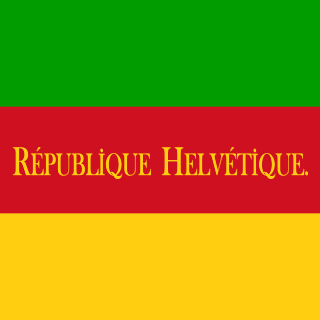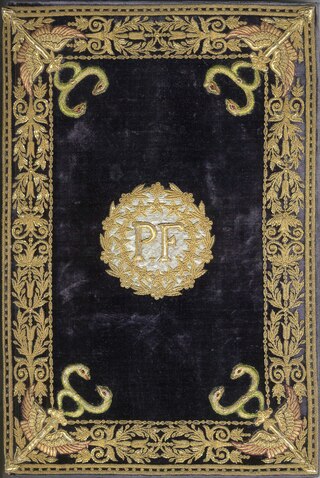| Part of the Politics series |
| Politics |
|---|
| |
 | |||||
| Systems of government | |||||
|---|---|---|---|---|---|
|
A directorial republic is a country ruled by a college of several people who jointly exercise the powers of a head of state and/or a head of government.
| Part of the Politics series |
| Politics |
|---|
| |
 | |||||
| Systems of government | |||||
|---|---|---|---|---|---|
|
A directorial republic is a country ruled by a college of several people who jointly exercise the powers of a head of state and/or a head of government.
One country now using this form of government is Switzerland [1] (and to a lesser extent, San Marino), where directories rule all levels of administration, federal, cantonal and municipal. On the face of it, the Swiss Federal Council might appear to be a typical parliamentary government; technically, however, it is not a meeting of ministers, but a college of heads of state. The current President of the Confederation is in fact only a primus inter pares (first among equals) with representative functions in particular for diplomacy with other States, without any power either of direction or of coordination of the activity of colleagues. [2] The Swiss Federal Council is elected by the Federal Assembly for four years, and is composed of seven members, among whom one is president and one is vice-president on a rotating basis, although these positions are symbolic in normal circumstances. The link between the Swiss managerial system and the presidential system is even more evident for the cantonal governments, where currently all directors are all individually directly elected by the voters. [3]
In political history, the term directory, in French directoire, is applied to high collegial institutions of state composed of members styled director. Early directorial systems were the Ambrosian Republic (1447-1450), the Bohemian Revolt (1618–1620), New England Confederation (1643–1686), partially in First Stadtholderless Period of Dutch Republic (1650–1672), Pennsylvania Constitution of 1776 and the Directory of 1795–1799 in France. [4]
The French Directory was inspired by the Pennsylvania Constitution of 1776, which prominently featured a collegial 12-member Supreme Executive Council with the President in fact only primus inter pares (first among equals). Variants of this form of government, based on the French model, were also established in the European regions conquered by France during the French Revolutionary Wars. Directorial systems have a lower presidentialism metric value compared to presidential systems due to lower concentration of political power in the hands of one individual. [5] Military juntas differ from the directorial system by not being elected. Utilizing sortition to select multiple executives can lead to a directorial system.
In the past, countries with elected directories include:
A republic, based on the Latin phrase res publica, is a state in which political power rests with the public through their representatives—in contrast to a monarchy.

}} The government of Switzerland is a federal state with direct democracy.
In the executive branch, the head of government is the highest or the second-highest official of a sovereign state, a federated state, or a self-governing colony, autonomous region, or other government who often presides over a cabinet, a group of ministers or secretaries who lead executive departments.

In the history of France, the First Republic, sometimes referred to in historiography as Revolutionary France, and officially the French Republic, was founded on 21 September 1792 during the French Revolution. The First Republic lasted until the declaration of the First Empire on 18 May 1804 under Napoléon Bonaparte, although the form of the government changed several times.

The Directory was the governing five-member committee in the French First Republic from 26 October 1795 until 10 November 1799, when it was overthrown by Napoleon Bonaparte in the Coup of 18 Brumaire and replaced by the Consulate. Directoire is the name of the final four years of the French Revolution. Mainstream historiography also uses the term in reference to the period from the dissolution of the National Convention on 26 October 1795 to Napoleon's coup d’état.

}} The 26 cantons of Switzerland are the member states of the Swiss Confederation. The nucleus of the Swiss Confederacy in the form of the first three confederate allies used to be referred to as the Waldstätte. Two important periods in the development of the Old Swiss Confederacy are summarized by the terms Acht Orte and Dreizehn Orte.

}} The Federal Council is the federal cabinet of the Swiss Confederation. Its seven members also serve as the collective head of state and government of Switzerland. Since after World War II, the Federal Council is by convention a permanent grand coalition government composed of representatives of the country's major parties and language regions.

The Helvetic Republic was a sister republic of France that existed between 1798 and 1803, during the French Revolutionary Wars. It was created following the French invasion and the consequent dissolution of the Old Swiss Confederacy, marking the end of the ancien régime in Switzerland. Throughout its existence, the republic incorporated most of the territory of modern Switzerland, excluding the cantons of Geneva and Neuchâtel and the old Prince-Bishopric of Basel.

During the French Revolutionary Wars, the revolutionary armies marched eastward, enveloping Switzerland in their battles against Austria. In 1798, Switzerland was completely overrun by the French and was renamed the Helvetic Republic. The Helvetic Republic encountered severe economic and political problems. In 1798 the country became a battlefield of the Revolutionary Wars, culminating in the Battles of Zürich in 1799.

The rise of Switzerland as a federal state began on 12 September 1848, with the creation of a federal constitution in response to a 27-day civil war, the Sonderbundskrieg. The constitution, which was heavily influenced by the United States Constitution and the ideas of the French Revolution, was modified several times during the following decades and wholly replaced in 1999. The 1848 constitution represented the first time, other than when the short-lived Helvetic Republic had been imposed, that the Swiss had a central government instead of being simply a collection of autonomous cantons bound by treaties.

The Federal Constitution of the Swiss Confederation of 18 April 1999 is the third and current federal constitution of Switzerland.

The Act of Mediation was issued by Napoleon Bonaparte, First Consul of the French Republic on 19 February 1803 to abolish the Helvetic Republic, which had existed since the invasion of Switzerland by French troops in 1798, and replace it with the Swiss Confederation. After the withdrawal of French troops in July 1802, the Republic collapsed. The Act of Mediation was Napoleon's attempt at a compromise between the Ancien Régime and a republic. This intermediary stage of Swiss history lasted until the Restoration of 1815. The Act also destroyed the statehood of Tarasp and gave it to Graubunden.
The Executive Council is the executive of the Swiss canton of Bern.

Frédéric-César de La Harpe was a Swiss political leader, writer and journalist, best known for his pivotal role in the independence of the canton of Vaud from Bern and in the formation of the Helvetic Republic, in which he served as a member of its Directory. He was a personal teacher of Alexander I of Russia and educated him in the ideas of the Lumières.

Peter Ochs was a Swiss politician who is best known for drawing up the first constitution of the short-lived Helvetic Republic.
The rise of the Argentine Republic was a process that took place in the first half of the 19th century in Argentina. The Republic has its origins on the territory of the Viceroyalty of the Río de la Plata, a colony of the Spanish Empire. The King of Spain appointed a viceroy to oversee the governance of the colony. The 1810 May Revolution staged a coup d'état and deposed the viceroy and, along with the Argentine war of independence, started a process of rupture with the Spanish monarchy with the creation of an independent republican state. All proposals to organize a local monarchy failed, and no local monarch was ever crowned.